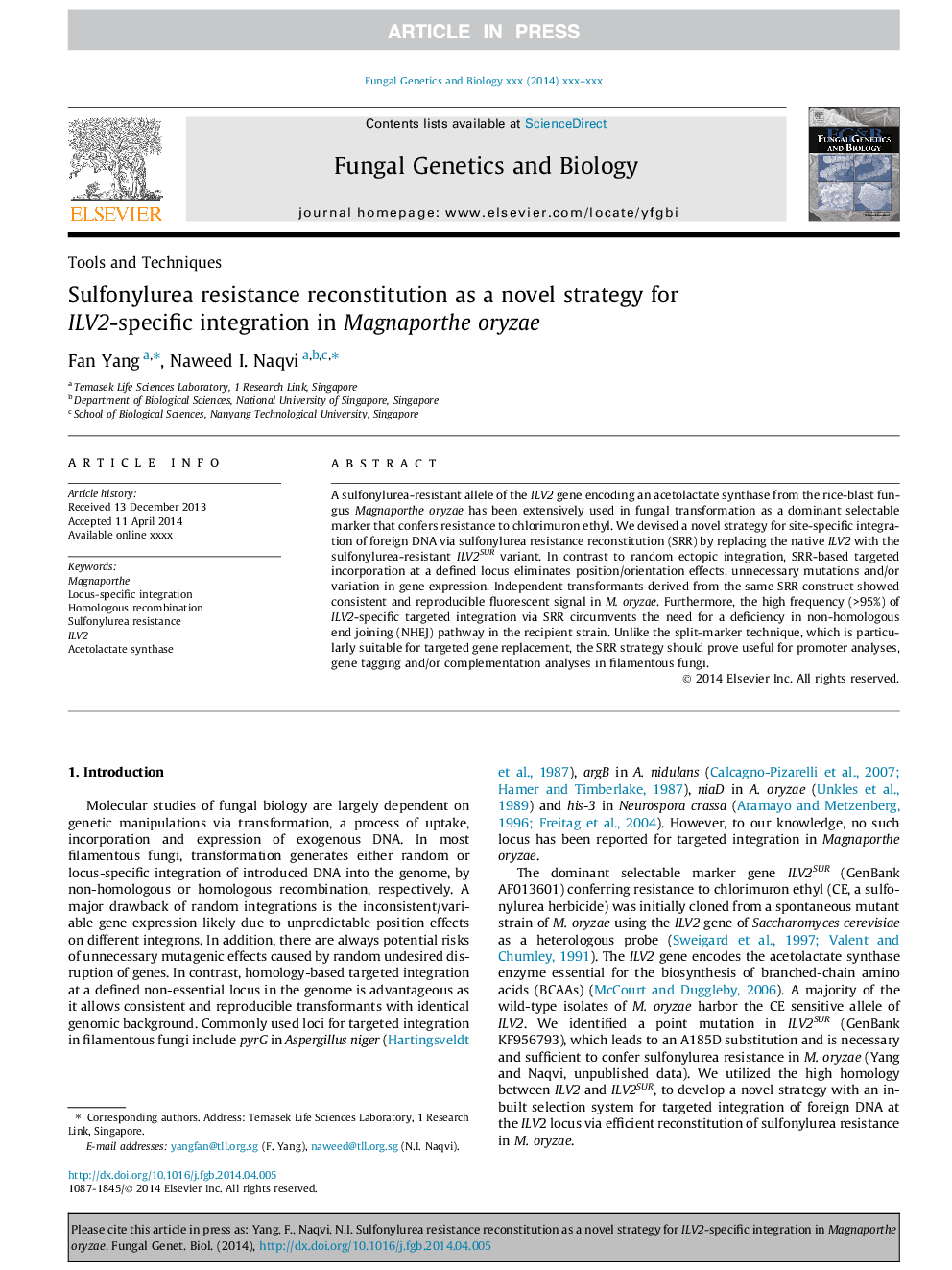| Article ID | Journal | Published Year | Pages | File Type |
|---|---|---|---|---|
| 8470886 | Fungal Genetics and Biology | 2014 | 6 Pages |
Abstract
A sulfonylurea-resistant allele of the ILV2 gene encoding an acetolactate synthase from the rice-blast fungus Magnaporthe oryzae has been extensively used in fungal transformation as a dominant selectable marker that confers resistance to chlorimuron ethyl. We devised a novel strategy for site-specific integration of foreign DNA via sulfonylurea resistance reconstitution (SRR) by replacing the native ILV2 with the sulfonylurea-resistant ILV2SUR variant. In contrast to random ectopic integration, SRR-based targeted incorporation at a defined locus eliminates position/orientation effects, unnecessary mutations and/or variation in gene expression. Independent transformants derived from the same SRR construct showed consistent and reproducible fluorescent signal in M. oryzae. Furthermore, the high frequency (>95%) of ILV2-specific targeted integration via SRR circumvents the need for a deficiency in non-homologous end joining (NHEJ) pathway in the recipient strain. Unlike the split-marker technique, which is particularly suitable for targeted gene replacement, the SRR strategy should prove useful for promoter analyses, gene tagging and/or complementation analyses in filamentous fungi.
Related Topics
Life Sciences
Biochemistry, Genetics and Molecular Biology
Cell Biology
Authors
Fan Yang, Naweed I. Naqvi,
